Welcome,
This experience is best enjoyed on a desktop computer.
Click anywhere or scroll to continue...
Click on this button or citation numbers to view reference information.
Hover over the left side of the screen to view specific topics.
You can find the page navigation, citations and share features in the menu here.

Welcome to radical transparency, aka THE CITATIONS. Before you X this out, be aware that this is NOT your average list of citations. Take it from us, citations can be mind-numbing and confusing. Is this source credible? Where in the 400+ page document did you pull this number? What does this dataset include, what does this NOT include? We’ve done our best to explain everything plainly, right here in this panel. Just click on the green text in the main scroll, and we’ll tell you where we got the data, why we chose it, and we’ll even answer the questions we had about the data… because we expect you’ll be asking those questions too.
This page uses the best publicly available data. Citations housed in this panel show sources throughout, but most of the data are sourced from the EPA’s Inventory of U.S. Greenhouse Gas Emissions and Sinks: 1990-2018, the U.S. Forest Service Forest Inventory and Analysis (FIA) program, or the U.S. Forest Service’s 2020 RPA Assessment. It's important to note that this page uses national data for 50 states.
Accuracy, Transparency and Continual Improvement
This data visualization is intended to help users better understand how forests and climate intersect using the best, publicly available data sets, most of which are provided by the U.S. government. Many serious climate conversations are underway in the public and private sector. Our working theory is that a common understanding of the relationships between forests and climate, the terminology, and most importantly, the data, will encourage productive dialogue and lead to good policy.
This page embraces what we call “radical transparency.” We have made our best effort to include precise citations and explain wonky scientific jargon in language that average humans can understand. That said, we’re humans too. We know that there are many ways to visualize concepts, interpret data, and simplify language. We hope our work spurs critical thinking, questions and dialogue.
If you have a question, a correction, a better source, or a good idea for what else we could do here, we want to hear from you. Email us at info@ForestCarbonDataViz.org.
This page embraces what we call “radical transparency.” We have made our best effort to include precise citations and explain wonky scientific jargon in language that average humans can understand. That said, we’re humans too. We know that there are many ways to visualize concepts, interpret data, and simplify language. We hope our work spurs critical thinking, questions and dialogue.
If you have a question, a correction, a better source, or a good idea for what else we could do here, we want to hear from you. Email us at info@ForestCarbonDataViz.org.
Similar to every web site, we have our own disclaimers. We want to make sure that you understand exactly what our Forest Carbon Data Visualization is – and what it’s not. The Forest Carbon Data Visualization is not intended to:
- provide complete carbon accounting for the US;
- discuss biomass carbon neutrality;
- quantify emissions from burning biomass in manufacturing facilities;
- claim carbon credits or offsets in a market sense;
- replicate or explain details from the EPA Greenhouse Gas (GHG) Inventory; or
- rigidly adhere to accounting structures developed by the United Nations Framework Convention on Climate Change (UNFCCC) for the sole purpose of international reporting of emissions.
Our Forest Carbon Data Visualization is simply intended to show you the potential of trees, especially trees in private, working forests, to remove 2 from the atmosphere through the process of sequestration and keep that 2 out of the atmosphere by storing it in trees. In accounting terms, these numbers are “gross.” This is not the same as the “net” carbon sequestration estimates for forests you will find in the EPA GHG Inventory Report (we’ll explain the whole net vs. gross thing later), so please don’t try to compare the two.
Then, so you can get an idea of the magnitude of the carbon sequestration and storage potential of private working forests, we compared them to things like the total US fossil fuel combustion emissions, automobile emissions, and wildfire emissions. These comparisons are purely for the purposes of, well, comparison, because the numbers come from entirely different datasets, so please don’t assume any kind of direct equivalency or one-to-one exchange. Keep reading the citations as you go along for more in-depth explanations.
This data visualization was developed by the National Alliance of Forest Owners. Data analysis was performed by the National Council for Air and Stream Improvement, Inc. (NCASI).


Let's Look at the Data
EPA GHG Inventory
The inventory of U.S. Greenhouse Gas Emissions and Sinks: 1990-2018, which was published in 2020, is part of an ongoing series of reports developed by the U.S. government to meet annual U.S. commitments under the United Nations Framework Convention on Climate Change (UNFCCC).
![]()
The U.S. Environmental Protection Agency (EPA), in cooperation with other U.S. government agencies, prepares the Inventory of U.S. Greenhouse Gas Emissions and Sinks (Inventory). A wide range of agencies, organizations, and individuals is involved in supplying data, planning methodological approaches and improvements, reviewing, or preparing portions of the Inventory, including federal and state government authorities, research and academic institutions, industry associations, and private consultants.
Within EPA, the Office of Atmospheric Programs (OAP) is the lead office responsible for the emissions calculations provided in the Inventory, as well as the completion of the National Inventory Report and the Common Reporting Format (CRF) tables. EPA’s Office of Transportation and Air Quality (OTAQ) is also involved in calculating emissions for the Inventory. The U.S. Department of State serves as the U.S. focal point to the UNFCCC, and EPA’s OAP serves as the National Inventory Focal Point for this report, including responding to technical questions and comments on the U.S. Inventory. EPA staff coordinate the annual methodological choice, activity data collection, emission calculations, quality assurance/quality control processes, and improvement planning at the individual source and sink category level. EPA, the inventory coordinator, compiles the entire Inventory into the proper reporting format for submission to the UNFCCC, and is responsible for the synthesis of information and consistency of cross-cutting issues in the Inventory.
Several other government agencies contribute to the collection and analysis of the underlying activity data used in the Inventory calculations, in addition to the calculation of estimates integrated in the report. These include the U.S. Department of Agriculture’s (USDA) Forest Service (USFS) and Agricultural Research Service, the National Oceanic and Atmospheric Administration (NOAA), the Federal Aviation Administration (FAA), and the Department of Defense (DOD). Formal relationships exist between EPA and other U.S. agencies that provide official data for use in the Inventory. For example, the U.S. Department of Energy (DOE) Energy Information Administration (EIA) provides national fuel consumption data, and the DOD provides military and bunker fuel consumption. Informal relationships also exist with other U.S. agencies to provide activity data for use in EPA’s emission calculations. These include: the USDA, NOAA, the U.S. Geological Survey (USGS), the Federal Highway Administration (FHA), the Department of Transportation (DOT), the Bureau of Transportation Statistics (BTS), the Department of Commerce (DOC), and the Federal Aviation Administration (FAA). Academic and research centers also provide activity data and calculations to EPA, as well as individual companies participating in voluntary outreach efforts with EPA. Finally, EPA as the National Inventory Focal Point, in coordination with the U.S. Department of State (DOS), officially submits the Inventory to the UNFCCC each April.
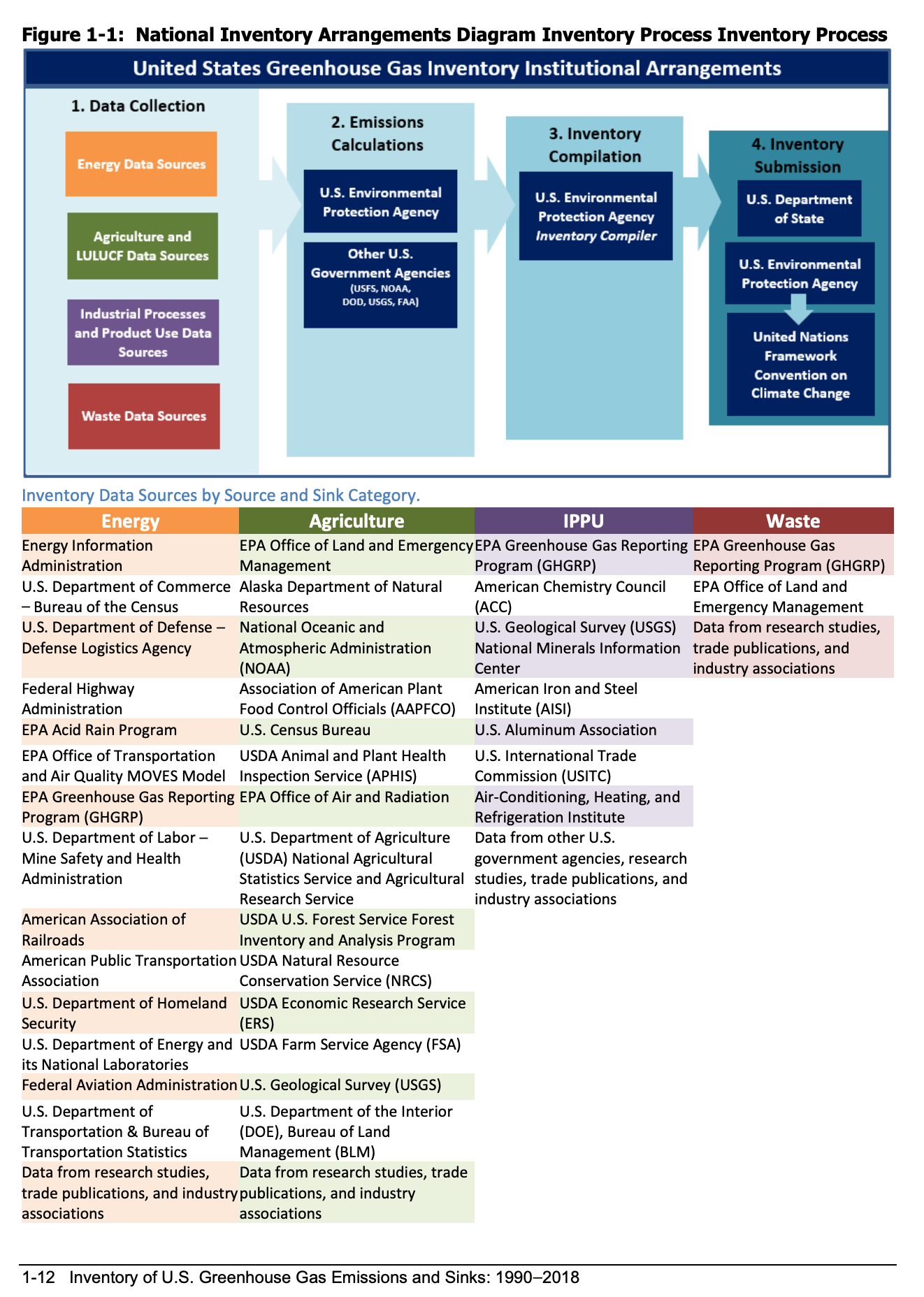
FIA
USDA’s Forest Inventory and Analysis (FIA) is widely regarded as the best strategic forest inventory in the world. FIA collects, analyzes, reports, and distributes data about the nation’s forests: how much forest exists, who owns it, what condition it's in, where it’s located, and how it's changed.
RPA
This publication provides forest resource statistics contributing to the USFS 2020 Resources Planning Act (RPA) Assessment to provide current information on the nation's forests. Resource tables present estimates of forest area, volume, mortality, growth, removals, and timber-product output in various ways within the context of changes since 1953.
Oswalt, Sonja N.; Smith, W. Brad; Miles, Patrick D.; Pugh, Scott A., coords. 2019. Forest Resources of the United States, 2017: a technical document supporting the Forest Service 2020 RPA Assessment. Gen. Tech. Rep. WO-97. Washington, DC: U.S. Department of Agriculture, Forest Service, Washington Office.
10 MMT of CO2e Comparisons
These comparisons are provided to put 10 million metric tons (MMT) into real-world perspective. They're taken directly from the EPA’s Greenhouse Gas Equivalencies Calculator.
If you're looking at this number of total U.S. vehicles registered and trying to back into the 1,068 MMT of CO2e figure for total passenger vehicle emissions, you might notice that they don’t line up perfectly. That's because the EPA and the Department of Transportation have different terms for “passenger vehicles” We use the source terminology, but it leads to some misalignments. We're trying to talk about cars on the road, or automobiles. This is an instance where, because of accounting and nomenclature nuances, everyone is right… but everyone is saying slightly different things.
What is CO2e?
CO2e, or Carbon Dioxide Equivalent, is a common unit for comparing various greenhouse gases. Individual greenhouse gases (GHG) have different global warming potentials. Converting these potentials to CO2e, using conversion formulas, provides a single, common reference to express global warming potential. CO2e is the amount of CO2 that would create the same amount of warming as the reference GHG. CO2e is now the most common way to express “emissions”, which helps when setting policy like emissions reduction targets. This helpful link explains carbon terms and units.
Total U.S. Emissions
This is the total gross United States greenhouse gas (GHG) emissions from 2018. This datapoint is from the EPA GHG Inventory, 2018 (Table 2-1)
Give it to me straight. What does this include, what does it not include? Total gross emissions mostly includes fossil fuel combustion – electric power generation and tail pipes – but it also includes emissions from things like landfills and enteric fermentation in domestic livestock (that’s how scientists say “cow burps”). It does NOT include biogenic emissions included in Land Use, Land Use Change and Forestry (LULUCF), which is a separate emissions category.
What about biogenic carbon emissions? Total gross emissions does not include biogenic carbon emissions (emissions from combustion of biomass, like wood and biofuels and “natural” emissions like those from fire or the decomposition of trees or other vegetation) because those are accounted for in the LULUCF emissions category. Including them in the total gross GHG emissions would result in double counting when the net emissions are determined.
Why? It’s nearly impossible to accurately report biogenic carbon emissions. Think about countries where many homes rely on wood stoves and open fires for cooking and heating. Or dead plants decaying in a wetland. Plus, unlike fossil fuel, the biogenic carbon cycle is actually a two-way street, meaning that carbon can also be “removed” from the atmosphere while plants grow. There really isn’t any way to measure those emissions alone, and since there is so much transfer both ways between the atmosphere and land in any given year, there needed to be a different approach to accounting for them.
Let's zoom in on wood, which comes from forests (the “F” in LULUCF). If we measure or estimate the amount of carbon in forests every year, we can calculate how much the carbon stocks change from year to year. This change is called the carbon flux. The carbon flux includes gains in carbon from, for example, tree growth, and losses in carbon from, for example, wildfire, wood being removed from the forest and burned for energy, or natural decomposition. The GHG Inventory reports carbon flux for forest land, cropland, grassland, wetland, and settlements (places where people live), all under the heading of LULUCF.
The good news is that by combining the gross U.S. GHG emissions with the total U.S. carbon flux from LULUCF, we can get an estimate of the total amount of U.S. GHGs actually released to the atmosphere (net emissions) without having to measure all the biogenic carbon emissions. The bad news is that by using this accounting approach, multiple types of biogenic carbon emissions and carbon sinks are combined in a single number and you can’t separate one from the other. That’s why we’ve tried to look at this a little bit differently, which you will see as you scroll.
U.S. Passenger Vehicle Emissions
We use passenger vehicles as a reference simply because, well, everyone does! Cars off the road has been the standard mechanism for perspective on climate data for years, so we’re putting this data in the context most people are used to. If you have a car, this is where the emissions from your tailpipe are counted.
In 2018 there were more than 111 million passenger vehicles registered in the U.S.
When folks think of “passenger vehicles” they think of cars. This figure includes emissions from cars, yes, as well as the gasoline and diesel emissions from light-duty trucks. This figure comes from the EPA GHG Inventory, 2018 (Table 3-13). More information on vehicles can be found on the Bureau of Transportation Statistics site, here.
Growing trees sequester 1,581 MMT of CO2e
This figure is calculated through an analysis of the RPA and FIA data. The analysis was done by the National Council of Air and Stream Improvement (NCASI). You can read about it in full here.
Sequestration vs. Storage
A lot of people mix up sequestration and storage, and even smart people use them interchangeably when they’re actually quite different – kind of like when moms call every gaming console a “Nintendo.” Don’t do that.
Sequestration is a natural, active process by which carbon is captured. A sequestration rate is an accounting for how much carbon was captured from the atmosphere over a specific period of time. Storage refers to how much carbon is stored at a specific point in time, like a snapshot. It’s always best to ask for clarification if forest carbon data is presented to you and sequestration/storage is unclear.
Sequestration is a natural, active process by which carbon is captured. A sequestration rate is an accounting for how much carbon was captured from the atmosphere over a specific period of time. Storage refers to how much carbon is stored at a specific point in time, like a snapshot. It’s always best to ask for clarification if forest carbon data is presented to you and sequestration/storage is unclear.
Why are there so many different numbers floating around?
These days, you can’t pick up a new climate report without tripping over a new top-line sequestration number. The complexity of this topic provides plenty of room to interpret, analyze, and report the data in lots of different ways. The reality is that we’re all humans, attempting to measure a complex, active, and continuous natural process, so it can get a bit messy.
The important thing to know is that the most commonly used numbers focus on different things for different purposes, but they all fit together. There are three numbers for “total sequestration” that are most commonly used:
- This page uses 1,581 MMT of CO2e.
Download the PDF- This figure is gross, total U.S. forest carbon sequestration – meaning only forestland in all 50 states – other land uses, like agriculture, are omitted. This is what we calculated using FIA data.
- The White House and EPA use 800 MMT of CO2e.
- This number is the 2019 net LULUCF sequestration, rounded off to 800 seemingly because it makes the math easier. It is for all 50 states and for all land use types.
- The Forest Service used 752.9 MMT of CO2e for 2018, which is still widely cited. Since then, they have revised the 2018 figure up to 782.4 MMT of CO2e and report 775.7 MMT of CO2e for 2019.
- These figures are net “CONUS”/ lower 48 states only, and include forest land, harvested wood products, woodlands, and urban trees in settlements.
Key questions to ask to understand top-line sequestration figures:
Is this a GROSS sequestration or NET sequestration figure?
The figures represented on this page are GROSS, meaning they're the simplest, most direct answer to the question “How much carbon do trees suck out of the air each year?” For this data visualization, the use of gross figures is intentional to show a complete picture of the sequestration work our forests are doing. It is akin to a business reporting total revenue, before accounting for expenses, debts, costs, etc.
The White House/EPA and Forest Service numbers most often quoted are NET, meaning they account for all the puts and takes of carbon transferring into or out of the atmosphere and just report the net impact. This is necessary when setting emissions reduction goals, because it gives a clear view of what needs to be done.
Is this a CONUS/Lower 48 or Total U.S. figure?
Despite how lovely Alaska and Hawaii are, it's always best to ask whether or not a figure includes them. The inconsistencies across data, agencies, and studies will surprise you. This page uses U.S. numbers, meaning all 50 states. The Forest Service numbers are “CONUS”, which is military/ scientist speak for continental United States, meaning they include only the lower 48 states.
Why is Alaska so different?
One-sixth of the nation’s forest is located in Alaska; it has more forest area than the 24 least forested states combined. Much of Alaska’s forest is so remote that it is accessible only by helicopter or foot, which makes measuring inventory plots extremely hard to do and expensive. Most of this forest is “taiga”, forests at the edge of tundra, where black spruce trees may only grow 1/50th to 1/20th of an inch in diameter per year, and few ever grow taller than 40 feet.
Consequently, Alaska has been a low priority for measurement by FIA. While inventory has been conducted in the highly productive timberland in Southeast Alaska, only in the past decade has much effort been expended to inventory timberland in interior Alaska. That work has relied on extensive use of remote sensing to cover vast areas at reasonable cost.
On this page, we used rates of growth on timberland in Alaska reported by the RPA assessment to estimate sequestration rates, and we used FIA data to estimate carbon stocks. These estimates cover only about 10% of Alaska’s forest, and because of the differences between the productive timberland in Southeast Alaska and the extensive taiga forests of the interior, we cannot extrapolate these estimates to all of Alaska.
Consequently, Alaska has been a low priority for measurement by FIA. While inventory has been conducted in the highly productive timberland in Southeast Alaska, only in the past decade has much effort been expended to inventory timberland in interior Alaska. That work has relied on extensive use of remote sensing to cover vast areas at reasonable cost.
On this page, we used rates of growth on timberland in Alaska reported by the RPA assessment to estimate sequestration rates, and we used FIA data to estimate carbon stocks. These estimates cover only about 10% of Alaska’s forest, and because of the differences between the productive timberland in Southeast Alaska and the extensive taiga forests of the interior, we cannot extrapolate these estimates to all of Alaska.
Is this a forest specific or a total land use figure?
This page sticks to forests, and specifically what you might call “traditional” forests or “woods”. This page does not include urban trees or forests – sorry, Central Park.
The White House/EPA number includes the total land base which includes cropland, wetlands, urban trees, etc.
Another thing you might be wondering is, if we know gross forest carbon sequestration and the net flux in forest carbon storage, can’t we just subtract net from gross and get the total annual emissions from forests?
The short answer is “No.” Remember when we were talking about how carbon flux is calculated for LULUCF? The emissions that are captured in that calculation include not just biogenic carbon emissions from forests but also industrial emissions from energy production and transportation that include biomass as part of the fuel mix. It's impossible, at least for now, to accurately and completely separate the biomass portion of these emissions. Consequently, we can’t calculate an accurate biogenic emissions total under LULUCF. This is not to be confused with biomass combustion emissions
1/3 of America is Forested
Of the total 2.3 billion acres of land that is the United States, 765 million acres are forested! The FIA program (which is where we get much of the data we use on this page) defines “forest” as a land use. This means that you could have land covered with trees that is not considered forest (Central Park in Manhattan, shady neighborhoods, apple orchards, citrus groves, etc.). So matching FIA, we define forest as a land area of a certain minimum size (1 acre) that has at least 10% tree cover and is not used for another land use.
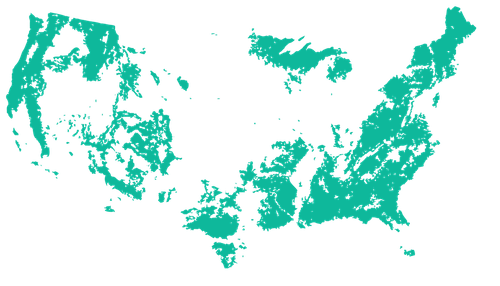
Forest Cover has Been Stable Since the 1900s
U.S. forest cover has been stable since the 1900s. There's a big misconception that the deforestation of tropical forests in places like Indonesia, the Philippines, and Brazil are the same challenges U.S. forests are facing. In the U.S., forest products are not causing deforestation. In fact, it’s quite the opposite. In the U.S. we regrow what is harvested. As a mature sector, modern forestry in the U.S. has some of the highest sustainability standards in the world. Private forest owners have an economic interest to keep working forests healthy, growing, and productive… So they do!
We're sticking to carbon and climate change on this page, but if you are interested in forest sustainability, here are some helpful links for some of the most prevalent forest certification programs:
Acreage
Forest data in the U.S. is often reported in two different ways: as the “CONUS”/contiguous 48 states (excluding Alaska and Hawaii), or as all 50 states. This page uses 50-state figures across acreage, sequestration and storage for consistency, but both breakdowns are provided below for easy reference.
- Total U.S. forestland (50 states): 765,493,000 acres
- Private working forests: 359,152,000 acres
- Private non-working forests: 84,330,000 acres
- Public working forests: 155,273,000 acres
- Public non-working forests: 166,738,000 acres
- Total U.S. forestland (Contiguous 48 states):635,286,000 acres
- Private working forests: 355,258,000 acres
- Private non-working forests: 51,546,000 acres
- Public working forests: 145,427,000 acres
- Public non-working forests: 83,055,000 acres
Public and Private Forests
The U.S. Forest Service’s Forest Inventory and Analysis (FIA) program records the ownership of every plot they visit to measure forest conditions. Public land includes land owned/managed by agencies such as U.S. Forest Service, Bureau of Land Management, National Park Service, U.S. Fish and Wildlife Service, U.S. Department of Defense (military bases), state agencies (such as Departments of Natural Resources), and local governments (such as city or county parks, county forests, etc.). Private forest lands include those owned by families, businesses, investors, and partnerships, as well as land owned by hunting clubs, tribal/native American organizations, and nonprofit conservation organizations such as The Nature Conservancy.
NOTE: Scroll down and consult citations in the next section for an explainer on working and non-working forests.
Working and Non-working Forest
What do we mean by “working” forest versus “non-working” forest?
Public and privately owned forests can be split into three classes based on whether or not the forest has contributed, or might contribute, to supplying wood or fiber for products:
- Forests that have been, or are very likely to be, harvested for wood products.
- Forests that could be harvested for wood products, but we have no idea whether or not they ever will be.
- Forests that are unlikely ever to be harvested for wood products.
The first class consists of areas where harvests have been recorded, or areas owned by organizations that have a history of harvesting forest products (land owned by institutional forest managers, county and state forests that have long provided wood to markets, and other such owners).
The second class includes areas of forest owned by private (usually smaller) landowners who (typically) have the right to do what they want with their land. So there’s no way of knowing whether they or their heirs might decide to harvest timber. It also includes large areas of publicly owned land that are available for timber harvest, but where timber harvest only occurs following careful planning, stakeholder input, political influence, lawsuits, and other unpredictable factors.
The third class consists of areas where timber harvest is restricted by law (National Parks and Wilderness Areas, for example) and areas where the growth rate is so slow that the forest cannot support regular harvests (very dry or high-elevation forests, for example).
The FIA program categorizes classes 1 and 2 as “Timberland” (productive forest not restricted from timber harvest) and we use that designation as “working forest” even though we can’t predict when or whether harvest will occur on the class two timberland.
Taking a more historical look at working forests, one could say almost all of our nation’s forests have been (or are) working forests. A 2006 paper took a historical look at forest carbon dynamics in the U.S., from 1600 to present. They note, for example “Forests in the United States were in approximate carbon balance with the atmosphere from 1600–1800. Utilization and land clearing caused a large pulse of forest carbon emissions during the 19th century, followed by regrowth and net forest carbon sequestration in the 20th century.” So part of our current high level of sequestration is a result of harvesting in the 19th and early 20th centuries. A 100-year old house is full of carbon stored in wood harvested during that time. So, from a historical perspective, there’s not much in the way of “unharvested working forests.”
Important note: All kinds of crazy wildlife thrive in both working and non-working forests.
TLDR
This mean's "too long, didn't read" …which is how millennials say "please summarize this."
Per-acre Averages
Forests in the U.S. have drastic differences based on species composition, region, location, ecosystem, management type, and climate. Comparing acre-to-acre from landscape-level data is not scientifically defensible. Don't make such comparisons based on the national data shown on this page, and be wary of anyone who tries to do it anyway. (If you’re one of those people who is still determined to do it despite being told not to, we recommend you watch this.)
Total U.S. Emissions
This is the total gross United States greenhouse gas (GHG) emissions from 2018. This datapoint is from the EPA GHG Inventory, 2018 (Table 2-1).
Give it to me straight. What does this include, what does it not include? Most of this is due to fossil fuel combustion – electric power generation and tail pipes – but it also includes emissions from things like landfills and enteric fermentation in domestic livestock (that’s how scientists say “cow burps”). This doesn't include emissions from Land Use, Land Use Change and Forestry (LULUCF). You can read more about LULUCF emissions in citation 20.
What about biogenic carbon emissions? The total gross GHG emissions does not include biogenic carbon emissions (emissions from combustion of biomass, like wood and biofuels and “natural” emissions like those from the decomposition of vegetation) because those are accounted for in the LULUCF emissions instead. Including them in the total gross GHG emissions would result in double counting when the net emissions are determined.
Why? It’s nearly impossible to accurately report biogenic carbon emissions. Think about countries where many homes rely on wood stoves and open fires for cooking and heating. Or dead plants decaying in a wetland. Plus, unlike fossil fuel, the biogenic carbon cycle is actually a two-way street, meaning that carbon can also be “removed” from the atmosphere while plants grow. There really isn’t any way to measure those emissions alone, and since there is so much transfer both ways between the atmosphere and land in any given year, there needed to be a different approach to accounting for them.
Let's zoom in on wood, which comes from forests (the “F” in LULUCF). If we measure or estimate the amount of carbon in forests every year, we can calculate how much the carbon stocks change from year to year. This change is called the carbon flux. The carbon flux includes gains in carbon from, for example, tree growth, and losses in carbon from, for example, wood being removed from the forest and burned for energy. The GHG Inventory reports carbon flux for forest land, cropland, grassland, wetland, and settlements (places where people live), all under the heading of LULUCF.
The good news is that by combining the gross U.S. GHG emissions with the carbon flux from LULUCF, we can get an estimate of the total amount of GHGs actually released to the atmosphere (net emissions) without having to measure all the biogenic carbon emissions. The bad news is that by using this accounting approach, multiple types of biogenic carbon emissions and carbon sinks are combined in a single number and you can’t separate one from the other. That’s why we’ve tried to look at this a little bit differently, which you will see as you scroll.
U.S. Passenger Vehicle Emissions
We use passenger vehicles as a reference simply because, well, everyone does! Cars off the road has been the standard mechanism for perspective on climate data for years, so we’re putting this data in the context most people are used to. If you have a car, this is where the emissions from your tailpipe are counted. In 2018 there were more than 111 million passenger vehicles registered in the U.S.
This figure comes from the EPA GHG Inventory, 2018 (Table 3-13). More information on vehicles can be found on the Bureau of Transportation Statistics site, here.
When folks think of "passenger vehicles" they think of cars. This figure includes emissions from cars, yes, as well as the gasoline and diesel emissions from light-duty trucks.
Emissions From Forestry Operations
This includes emissions from operations in the forest, including fuel consumption from harvesting equipment, fertilization, and burning slash piles. The best available U.S.-wide information is from this study using data from 2005. We recognize that this is old data, but it is the only data we have at this point. We're looking for ways to update this information for future use.
Emissions From Forest Products Manufacturing Facilities
This includes direct emissions associated with the manufacture of pulp, paper, paper products, and wood products, plus emissions associated with the generation of electricity that is purchased, plus emissions of CH4 and N2O from biomass combustion at the facility.
This figure does not include direct emissions from the combustion of biomass (biogenic CO2) because EPA does not include those emissions in the total gross GHG emissions reported in the GHG Inventory (see citation 20). However, we can take component pieces of data to calculate total biogenic CO2 emissions: approximately 137 MMT CO2e. The sources for this calculation are:
- Energy use information is from the U.S. Energy Information Administration’s 2018 Manufacturing Energy Consumption Survey (EIA MECS). https://www.eia.gov/consumption/manufacturing/
- Biogenic CO2 emission factors come from EPA. Emission factors for purchased electricity emission factors come from 2018 EPA’s Emissions & Generation Resource Integrated Database (eGRID). https://www.epa.gov/egrid
- Fossil and biomass CH4 and N2O factors come from the NCASI/ICFPA GHG calculator.
Biomass Emissions
Important clarification! This biomass emissions box is presented for perspective only. Biomass emissions are not industrial emissions, so they would not be included in these gray boxes.
This is the sum of emissions from biomass combustion at forest products manufacturing facilities, and emissions from the combustion of “biomass-wood” for Energy Production, .
Annual Wildfire Emissions
This figure is from the EPA GHG Inventory (P. 479, Table 6-13).
Important clarification! This wildfire emissions box is presented for perspective only. Wildfires are not an industrial emission, so they would not be included in these gray boxes. EVERYONE asks about wildfire emissions, which is one of the reasons why the EPA provides it as one of the only details from the LULUCF emissions accounting subtotals. See citation 20 for more information about LULUCF.
Why are wildfire emissions so hard to pin down? Wildfire emissions are hard to estimate, and there are a variety of numbers whizzing around out there. One major reason for this is that wildfires are not always “forest fires” – many wildfires burn through grasslands and brushlands, as well as forest land, and total area burned is often lumped together. Some reported numbers are state-specific, some are for a specific year, and some report emissions over a longer period of time. For national stats, it can be unclear if a reported number includes Alaska or not. This number does include Alaska.
For reference: The infamous Camp Fire occurred in 2018. Wildfires in California released an estimated 45.5 MMT of CO2e that year, according to the California Air Resources Board.
More Info on Emissions Here
Ok, so I think I get gross versus net, but what’s LULUCF got to do with it?
Remember when we told you that the big difference between the total gross U.S. GHG and total net U.S. GHG emissions is LULUCF? That’s because “Land Use, Land Use Change and Forestry” (LULUCF) are very different from the other types of emissions. This category of emissions is from the land (all the Ls in LULUCF) – forest land, cropland, grassland, wetland, and settlements (places where people live). It’s true that there are GHG emissions from land. For example, vegetation in wetlands decays, wildfires burn vegetation, and grassland and forestland are converted to settlements. In forests, much of those emissions is from bioenergy, fire and other natural disturbances, and dead or dying trees, which is a growing source of emissions in a number of states in the Intermountain West.
However, thanks to growing plants that absorb CO2 from the atmosphere, a lot more CO2e is removed than is emitted to the atmosphere nationwide (Thanks especially to healthy forests, where growing trees sequester A LOT of carbon.) So – drum roll, please – in 2018, net LULUCF sequestration removed 773.5 MMT CO2e from the atmosphere, 754.5 MMT CO2e of which was sequestered by forest land. EPA GHG Inventory, 2018 (Tables 2-1 & 6-3) Remember that these are net emissions rather than gross emissions. Net emissions are not reported by forest categories so, unfortunately, there is currently no way to divide these figures by forest category, like we have with gross forest sequestration and storage.
So how does LULUCF account for the difference between gross versus net emissions?
Once you subtract net LULUCF from gross emissions, you get net emissions., which, for 2018, were 5903.2 MMT CO2e. If you’re wondering why this seems different from the gross emissions figure depicted earlier, that’s because these figures are different. Remember, this is NET, the visuals are GROSS.
How do biomass emissions fit in here?
First, let’s define “biomass emissions.” When we talk about biomass emissions, we’re mostly talking about emissions from the combustion of biomass to produce electricity or heat or to power a vehicle (like those trucks that run on biodiesel). In the U.S., forest biomass is used primarily to provide combined electricity and heat at mills, to heat individual homes or buildings, or to produce electricity directly to the grid.
As we explained earlier, because these emissions are included in the LULUCF sector under the United Nations Framework Convention on Climate Change, biomass emissions aren’t directly included in the energy sector GHG emissions, so we haven’t shown them here. However, just in case you’re interested, according to EPA’s Inventory of U.S. Greenhouse Gas Emissions and Sinks: 1990-2018 (Table 3-1), in 2018, emissions from the combustion of “Biomass-Wood” for energy production were 229.1 MMT CO2e. The EPA GHG Inventory Report does not differentiate if these emissions come from material derived from forests or if they also include materials from land use conversion. Of course, that isn’t all of the biogenic carbon emissions and, like we said before, most of them can’t be separated from the total LULUCF carbon flux reported in the GHG Inventory. The only reason this one can be is that EPA collects those data from U.S. energy producers – even though they don’t include these emissions when they add up the total gross GHG emissions. This figure is just one piece of one jigsaw puzzle... that goes to a different puzzle than this data visualization. It cannot be compared to the data presented without double counting.
What about all those log trucks and wood delivery trucks I see on the highway? Have you included emissions from those?
Well, yes and no. U.S. emissions from transportation, both passenger and cargo transport, are reported in the GHG Inventory Report (Table 3-13) and thus are included in the total gross U.S. emissions. But there isn’t a good, recent source of information on U.S.-wide transport-related emissions for forestry and forest products, so we couldn’t separate those from the total and present them separately. This is something we will add to the visualization as soon as we're able.
If you’re looking for more emissions data, check out the EPA GHG Inventory, or the Forest Service’s GHG emissions and removals from forest lands, woodlands, and urban trees in the United States, 1990-2019.
Sequestration
Gross sequestration figures are reflective of the basic process of tree growth between two periods of time.
Growing Trees Sequester 1,581 MMT of CO2e
This figure is calculated through an analysis of the RPA and FIA data. The analysis was done by the National Council of Air and Stream Improvement (NCASI). You can read about it in full here.
Private working forests account for 73% of our gross forest carbon sequestration. To put that into context, private working forests sequester more carbon than is emitted by passenger vehicles each year.
Sequestration Breakdown
Sequestration data in the U.S. is often reported in two different ways: as the “CONUS”/contiguous 48 states (excluding Alaska and Hawaii), or as all 50 states. This page uses 50-state figures across acreage, sequestration and storage for consistency, but both breakdowns are provided below for easy reference.
- Total U.S. forestland gross sequestration (50 states): 1,581 MMT CO2e
- Private working forests gross sequestration: 1,151 MMT CO2e
- Private non-working forests gross sequestration: 12.9 MMT CO2e
- Public working forests gross sequestration: 325 MMT CO2e
- Public non-working forests gross sequestration: 92 MMT CO2e
- Total U.S. forestland gross sequestration (Contiguous 48 states): 1,564 MMT CO2e
- Private working forests gross sequestration: 1,148 MMT CO2e
- Private non-working forests gross sequestration: 12.9 MMT CO2e
- Public working forests gross sequestration: 312 MMT CO2e
- Public non-working forests gross sequestration: 92 MMT CO2e
Sequestration puts and takes "Here’s a deeper dive."
This figure is calculated through an analysis of the RPA and FIA data. The analysis was done by the National Council of Air and Stream Improvement (NCASI). You can read about it in full here.
Sequestration Breakdown
Sequestration data in the U.S. is often reported in two different ways: as the “CONUS”/contiguous 48 states (excluding Alaska and Hawaii), or as all 50 states. This page uses 50-state figures across acreage, sequestration and storage for consistency, but both breakdowns are provided below for easy reference.
- Total U.S. forestland gross sequestration (50 states): 1,581 MMT CO2e
- Private working forests gross sequestration: 1,151 MMT CO2e
- Private non-working forests gross sequestration: 12.9 MMT CO2e
- Public working forests gross sequestration: 325 MMT CO2e
- Public non-working forests gross sequestration: 92 MMT CO2e
- Total U.S. forestland gross sequestration (Contiguous 48 states): 1,564 MMT CO2e
- Private working forests gross sequestration: 1,148 MMT CO2e
- Private non-working forests gross sequestration: 12.9 MMT CO2e
- Public working forests gross sequestration: 312 MMT CO2e
- Public non-working forests gross sequestration: 92 MMT CO2e
Carbon Storage
How do you calculate forest carbon storage? Which pools are included?
Forest carbon exists in a number of “pools” or forest components, such as living trees, dead trees, understory vegetation, forest floor, standing and down dead wood, and soil. The U.S. Forest Service Forest Inventory and Analysis (FIA) program has data on all of these components. The living tree pool is measured on every plot, while many of the other pools are based on modeled estimates. The numbers in the forest carbon map include all pools measured or estimated by FIA.
FIA data were downloaded from this link and analyzed using procedures recommended by FIA carbon scientists.
What about soil carbon?
The carbon storage totals shown on this page include soil carbon. Soil carbon is a very large pool. It is very slow to change, and relatively unaffected by forest management over the long term. It is also highly variable within a forest, so it would take a tremendous amount of sampling to get precise estimates for smaller areas.
While the FIA program has started to measure soil carbon on many plots, the data currently available nationwide are estimates based on forest type that were developed from overlaying forest type maps with soil carbon maps. They represent broad averages across large regions. Therefore, these estimates do not change over time unless an FIA plot changes forest type (for example, due to harvest or gradual forest species change).
Carbon Storage Breakdown
Carbon storage generally refers to the measurement of carbon in a carbon storage pool at a specific point in time. Forest-carbon storage pools can include things like standing trees, soil carbon, litter, landfills, and wood products. Storage changes like a bank account does, with income (sequestration) being added to the current account (stock), and expenses (emissions) being deducted.
Storage data in the U.S. is often reported in two different ways: as the “CONUS”/contiguous 48 states (excluding Alaska and Hawaii), or as all 50 states. This page uses 50-state figures across acreage, sequestration and storage for consistency, but both breakdowns are provided below for easy reference.
- Total U.S. forestland carbon storage (50 states): 149,560 MMT CO2e
- Private working forests carbon storage: 82,057 MMT CO2e
- Private non-working forests carbon storage: 4,296 MMT CO2e
- Public working forests carbon storage: 42,706 MMT CO2e
- Public non-working forests carbon storage: 20,501 MMT CO2e
- Total U.S. forestland carbon storage (CONUS/Contiguous 48 states): 145,138 MMT CO2e
- Private working forests carbon storage: 81,612 MMT CO2e
- Private non-working forests carbon storage: 4,170 MMT CO2e
- Public working forests carbon storage: 40,474 MMT CO2e
- Public non-working forests carbon storage: 18,882 MMT CO2e
Emissions from forests
The emissions that are accounted "against" forests are a moving target. This comes down to the fact that the question, "what are the emissions associated with forests and wood products?" has many answers depending on what you want to include.
If you are not thinking about official carbon accounting, but you are focused on the conceptual “carbon footprint” (or lack thereof) of our forests and wood products, you would come up with a list of emissions in your head that would make sense to attribute to forests. Things like mortality, standing dead trees, rotting logs and limbs, wildfires, timber harvests, combustion for biomass emissions, respiration from photosynthesis, wood products manufacturing, and depending on how far you take it, the gas for the truck that delivered your package, etc.
However, it’s not that simple: do you include all land based GHG emissions from trees, forests? What about the entire supply chain? If you include the entire supply chain, do you count the electricity used by a mill in the forest category or in the energy production category? What about emissions that can’t be measured?
If you’re an average person you will think about forest emissions differently from how the UN guides countries to report emissions data. Because of this, there are differing, correct pieces of data floating around out there that don’t line up.
Emissions are accounted for in different places and categories which makes combining data into a neat story that might fit a conceptual view of forest emissions impossible without double counting.
There is an international standard from the UN that outlines how countries should account for these emissions. This is how the EPA reports emissions data in the Inventory of Greenhouse Gasses. That roughly breaks up industrial emissions and biogenic emissions, and results in a best way to account for the unmeasurable emissions while also avoiding double counting.
This website is not a reflection of how carbon emissions are accounted for by the UN. We are here to cover concepts of the forest carbon cycle, and try to put as much of this data as we can in perspective.
What we wish we could do is show the math exactly that shows the gross sequestration number and then all of the emissions that you cut out to get down to a net sequestration figure. As we mentioned in citations , , and , the data just doesn’t fit together without double counting.
An example here is the emissions from a log truck. Conceptually, you would think that you would like to account for this carbon under forests. However, if you’re accounting for emissions from an economy-wide perspective, it would be impossible to break up all the different trucks in the country to attribute their emissions to specific sectors. So, those emissions are lumped together with other trucks and are accounted for in industrial emissions under transportation.
Trees in the forest die
620 MMT CO2e/year. This is the average amount of carbon in trees that die in one year. This represents a transfer of carbon to the dead tree pool. Eventually, over time, as this dead wood decomposes, the carbon it contains will be released back into the atmosphere as a forest emission. (This figure is calculated through an analysis of the RPA and FIA data.)
We harvest trees
593 MMT CO2e/year. This is the average amount of carbon removed from the forest through harvest in a year. Most of this carbon will be transferred to the harvested wood products carbon pool, but some wood and wood products will be combusted as fuel, releasing carbon as an emission. (This figure is calculated through an analysis of the RPA and FIA data.)
"Net sequestration"
This refers to the amount of carbon actually added to storage pools in forest land, harvested wood products, woodlands, and urban trees in settlements. As reported by the U.S. Forest Service here.
Net vs. Gross Sequestration
This all gets so complicated because “net sequestration” can mean different things. It can be used in a general business accounting sense, which is how we’ve just used it here: the gross forest carbon sequestration (revenue) minus the forest carbon emissions (operating costs) equals the net sequestration (profit).
But there is another definition of net sequestration that is used in carbon accounting under the United Nations protocol (UNFCCC) that EPA follows when the create the annual GHG Inventory Report.
Remember when we talked about how it’s nearly impossible to accurately report And how the UN got around that problem by measuring or estimating how much the carbon stocks change from year to year on forest land and in This change, also called carbon flux, includes gains in carbon from, for example, tree growth, and losses in carbon from, for example, wildfire, wood being removed from the forest and burned for energy, and natural decomposition of dead vegetation. For the purposes of carbon accounting, as reported every year by EPA in the GHG Inventory Report, this carbon flux is called net sequestration.
In 2018, the Forest Service reported net sequestration as 752.9 MMT of CO2e, which is still widely cited. Since then, they have revised the 2018 figure up to 782.4 MMT of CO2e. The EPA reported net sequestration of carbon in forests and HWP as 754.5 MMT CO2 eq. (Total net flux from Table 6-10 of the Inventory of US Greenhouse Gas Emissions and Sinks 1990-2018). You may be wondering if we can get an estimate of the annual forest-related biogenic emissions by subtracting net sequestration from gross sequestration as reported here. It would be nice if it were that simple, but it is not. Gross sequestration is the amount of carbon sequestered in growing trees while net sequestration, as used in the EPA GHG Inventory Report includes forest carbon in aboveground biomass (like trees) belowground biomass (like plant roots), dead wood, litter, and soil, as well as carbon in harvested wood products in use and in solid waste disposal sites, so it’s kind of like subtracting apples from oranges.
The limit isn’t your imagination, it’s the data.
What you might think we can do:
All forest sequestration
–
all forest emissions
=
net carbon sequestration
–
all forest emissions
=
net carbon sequestration
What we can actually do:
Measurement of carbon stocks this year
–
measurement of carbon stocks last year
=
net sequestration/carbon flux/carbon stock change.
–
measurement of carbon stocks last year
=
net sequestration/carbon flux/carbon stock change.
Additional Wood Products 98.8 MMT of CO2e
Timber harvests don't cause an immediate release of all harvested biomass carbon to the atmosphere. (No, we don’t harvest using lightsabers where tree trunks are immediately sublimated into the atmosphere.) Instead, harvesting transfers a portion of the carbon stored in wood to a "product pool." If, for example, timber is harvested and used as lumber in a house, it may be many decades or even centuries before the lumber decays and carbon is released to the atmosphere. If wood products are disposed of in solid waste disposal sites (SWDS), the carbon contained in the wood may be released many years or decades later or may be stored almost permanently in the SWDS. (Inventory of U.S. Greenhouse Gas Emissions and Sinks: 1990–2018)
The additional wood products figure is from Table 6-10 in the Inventory of U.S. Greenhouse Gas Emissions and Sinks: 1990–2018. This is the net flux in carbon added to harvested wood products stores for 2018. By “net flux,” we mean the amount of carbon added to the storage pools of solid wood products and solid waste disposal sites, minus the amount of carbon released from those storage pools through, e.g., decay, burning, or transfer to another carbon storage pool.
"Other stuff"
Not to mention any names... but not all materials are biodegradable, sustainable, and renewable like wood. Some materials have huge carbon footprints and can be, well, the cement shoes dragging progress on climate down. Here’s some more information: The Greenhouse Gas Reporting Program (GHGRP) collects Greenhouse Gas (GHG) data from large emitting facilities, suppliers of fossil fuels and industrial gases that result in GHG emissions when used. Primary aluminum, ferroalloy, iron and steel, lead, magnesium, and zinc production facilities report GHG emissions from metal smelting, refining, and/or casting activities, as well as from stationary fuel combustion sources. This number is taken from the table titled “Number of reporters and 2019 emissions (CO2e) per metals industry subsector” at this web page: https://www.epa.gov/ghgreporting/ghgrp-metals
Glass, cement, soda ash and lime facilities report both process emissions from the calcination of carbonate-based raw materials and GHG emissions from stationary fuel combustion sources. This number comes from a table titled, "Number of reporters and 2019 emissions (CO2e) per minerals industry subsector" at this web page: https://www.epa.gov/ghgreporting/ghgrp-minerals
Wood Product Storage Pool
The carbon storage pool data is from table 6-12 in the Inventory of U.S. Greenhouse Gas Emissions and Sinks: 1990–2018. Table 6-12 lists the total weight of carbon (MMT C) stored in harvested wood products (solid wood products + solid waste disposal sites) in 2018. This value represents the total amount of carbon stored in harvested wood products in 2017, plus the amount of carbon added to the harvested wood products storage pool in 2018 minus the amount of carbon released from those storage pools through, e.g., decay, burning, or transfer to another carbon storage pool. The weight of carbon (MMT C) shown in table 6-12 for 2018 is converted to MMT CO2e by multiplying the weight of carbon by 3.67.
How do we know about wood products carbon storage?
Estimates of carbon storage in harvested wood products (HWP) depend on how much of the wood is used in what types of products: those stored for long periods of time (e.g., construction lumber), or those stored for short periods of time (e.g., packaging). The size of the HWP carbon pool depends on historical rates of home building, the average lifespan of those homes (which changes over time), the amounts of wood using in typical construction, the rates of recycling of wood and paper products, the disposition of products after their useful lifespan (e.g., burned, mulched, landfilled, dumped), the characteristics of landfills in the region (whether they are capped to prevent emissions, whether any methane is burned or released to the atmosphere, etc.). For HWP carbon stocks, we used estimates derived by the U.S. Forest Service for EPA’s annual inventory of greenhouse gases.
Wood Product Sink V.S. National Parks
Wood products store more than double the carbon stored in all national parks.
- National Parks store 3,465 MMT of CO2e (See Table 4, showing National Parks C stocks as 945 MMT C, which is 3,465 MMT CO2e)
- Wood products store 9,786 MMT of CO2e. The carbon storage pool data is from table 6-12 in the Inventory of U.S. Greenhouse Gas Emissions and Sinks: 1990–2018.
Wood Product Market Volume Breakdown
This breakdown comes from RPA Table 39, with pellet data broken out from a Forest2Market study: Forest Inventory and Harvest Trends on Privately Owned Timberlands in the 32 State Study Area.
Total Annual Harvest
This figure is calculated through an analysis of the RPA and FIA data. The analysis was done by the National Council of Air and Stream Improvement (NCASI). You can read about it in full here.
Harvests of any type – thinning, road construction, fire fuel breaks, or final harvests – occur on less than 2% of working forests.
Acres where harvests occurred in 2018 totaled 7,878,000 acres (7,180,000 on private land, and 698,000 on public land).
Acreage
Forest data in the U.S. is often reported in two different ways: as the “CONUS”/contiguous 48 states (excluding Alaska and Hawaii), or as all 50 states. This page uses 50-state figures across acreage, sequestration and storage for consistency, but both breakdowns are provided below for easy reference.
- Total U.S. forestland (50 states): 765,493,000 acres
- Private working forests: 359,152,000 acres
- Private non-working forests: 84,330,000 acres
- Public working forests: 155,273,000 acres
- Public non-working forests: 166,738,000 acres
- Total U.S. forestland (Contiguous 48 states): 635,286,000 acres
- Private working forests: 355,258,000 acres
- Private non-working forests: 51,546,000 acres
- Public working forests: 145,427,000 acres
- Public non-working forests: 83,055,000 acres
Harvests Occur on Less Than 2% of Working Forest Land Each Year.
This figure is calculated through an analysis of the RPA and FIA data. The analysis was done by the National Council of Air and Stream Improvement (NCASI). You can read about it in full here.
The total annual replanted figure was pulled from RPA Table 43, and is an average of last five years (2011-2015). No data is available for 2004-2010. 🤷♀️
The whole notion of how much we regrow is based on the fact that if it’s not regrown, then it’s no longer forest. If it’s no longer a forest, it’s no longer forestry we’re talking about, but land use conversion. The RPA (Table 3) tells us that overall, we’re not losing forest cover in the U.S. (The numbers changed less than 1/10th of 1%, which is within our sampling error... So for every acre that might have been harvested and not regrown (i.e. turned into a neighborhood or big box store), there was another acre somewhere that someone let grow back into trees.
Regrown? Replanted? Regenerated? What does it all mean?
“Regrown” is not a scientific term, but it is how average people speak, and it is the best way to describe the replacing of trees or a forest by any method. Foresters make the decision to use natural regeneration or replanting based on a host of variables. Across the country, varying ecosystems, climates, geographies, and species compositions make forests incredibly diverse, which impacts how foresters – the experts – determine the best way to regrow.
Natural regeneration is basically letting nature take its course. It most often occurs by way of natural seeding (think: acorns or wind-blown seeds), stump sprouts or root sprouts from existing trees. Natural regeneration is typically the most effective approach in hardwood forests.
In forest management terms, replanting means human involvement, sticking seedlings into the ground either by hand or with machines. Machine and hand planting of seedlings is more commonly used to regenerate conifer stands.
Most people want to ask, “how many trees do we plant a year?” Well, determining the exact number of trees “replanted” each year is actually much harder than one might think. We know for sure that we plant more than 1 billion trees a year in the United States, but we think that’s pretty conservative. What’s more, natural regeneration makes it impossible to calculate a total number of trees regrown each year.
Grow 43% More Than We Harvest Each Year
This comes from a study done by Forest2Market for the National Alliance of Forest Owners (NAFO): Forest Inventory and Harvest Trends on Privately Owned Timberlands in the 32 State Study Area
Looking for a different growth/harvest ratio?
The ratio comes from numbers reported for growth and for harvest (called “removals” in many U.S. Forest Service publications). If growth is 2 million tons (or cubic feet, or whatever), and harvest is 1, then we have a growth/harvest ratio of 2/1, and we say that we’re growing twice as much as we’re harvesting.
From the 2017 RPA assessment (https://www.fs.usda.gov/treesearch/pubs/57903), tables 34 (growth) and 35 (removals/harvest), we get:
All private working forest land: On all private working land, forests are growing 79% more than is harvested. (Growth of 20.64 billion cubic feet divided by Removals of 11.55) This figure is higher than the 43% figure in the scrolling page because the 43% figure is from a study with a narrower scope that looks at the most heavily managed forests and not the broad “all private working land” classification of forests.
All public working forest land: On all government-owned working forestland, forests are growing 193% more than is harvested. (Growth of 4.4 billion cubic feet divided by Removals of 1.5 billion cubic feet).
All working forest land: On all working forest land, forests are growing 92% more than is harvested (Growth of 25 billion cubic feet divided by Removals of 13 billion cubic feet).
Acreage Data
Forest data in the U.S. is often reported in two different ways: as the “CONUS”/contiguous 48 states (excluding Alaska and Hawaii), or as all 50 states. This page uses 50-state figures across acreage, sequestration and storage for consistency, but both breakdowns are provided below for easy reference.
- Total U.S. forestland (50 states): 765,493,000 acres
- Private working forests: 359,152,000 acres
- Private non-working forests: 84,330,000 acres
- Public working forests: 155,273,000 acres
- Public non-working forests: 166,738,000 acres
- Total U.S. forestland (Contiguous 48 states): 635,286,000 acres
- Private working forests: 355,258,000 acres
- Private non-working forests: 51,546,000 acres
- Public working forests: 145,427,000 acres
- Public non-working forests: 83,055,000 acres
Regrown Acreage
The total annual replanted figure was pulled from RPA Table 43, and is an average of last five years (2011-2015). No data is available for 2004-2010.
We know that forest area in the U.S. (see RPA Table 3), has recently changed by less than 1/10th of one percent- essentially below statistical detection limits. With no detectable overall loss, that means that for every acre of forest lost (to development or agriculture), another acre somewhere else has been reforested. And that all harvested acres have regrown, either by planting or natural regeneration.
Forest Area Over Time
As Cher would say, if we could turn back time, if we could find a way, we would show you this forest service publication showing forest area over time.
U.S. Population
There are a lot of people here.
60% Tree Volume Increase
From the RPA assessment, Table 20, we find that U.S. working forests (called “Timberland” in the RPA), had 985 billion cubic feet of wood in trees in 2017, up 60% from the 616 billion cubic feet in 1953.
What if we had better ways to pay forest owners for their carbon?
What if we embraced reducing the carbon footprint of the built environment?
What if we understood all of this better?
Carbon Clock
"This is determined by simply dividing the gross annual sequestration (1,581 MMT of CO2e) by days/hours/minutes. That equals about 3,008 tons of CO2e per minute, which is used to calculate the amount sequestered since you’ve been on this page."
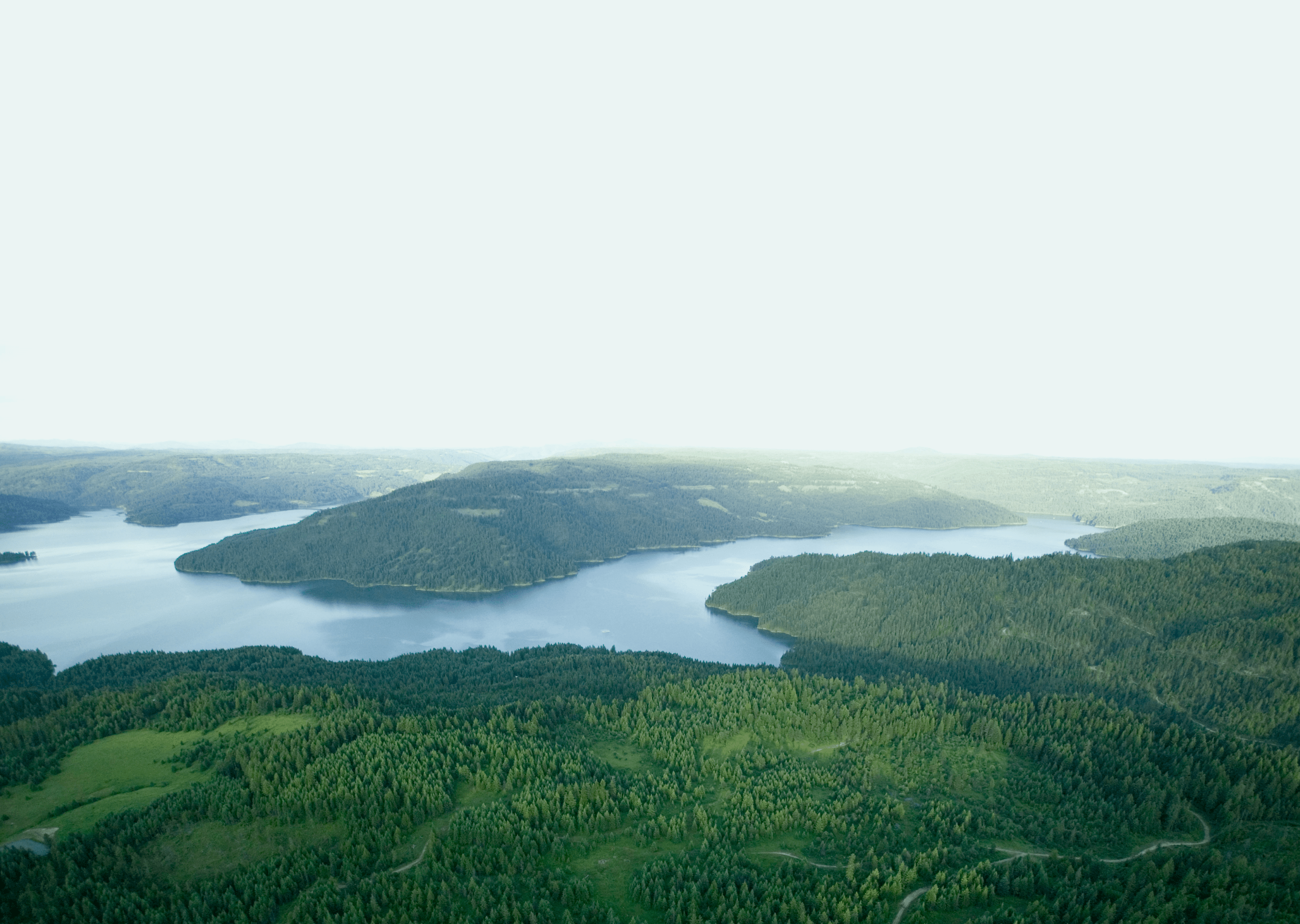
We all know that our forests are a natural climate solution. But not all forests are the same.
How can we maximize our forests' ability to mitigate the effects of climate change?
Let's take a look at the data.
How can we maximize our forests' ability to mitigate the effects of climate change?
Let's take a look at the data.
This square represents
10 million metric tons (MMT) of CO 2e.
10 million metric tons (MMT) of CO 2e.
In a single year, the
U.S. emits roughly
6,676 MMT of CO 2e.
U.S. emits roughly
6,676 MMT of CO 2e.
Total U.S. Passenger Vehicle
Emissions per year
1,068 MMT CO2e
Emissions per year
1,068 MMT CO2e
Growing trees sequester
1,581 MMT of that CO 2e.
1,581 MMT of that CO 2e.
Just so we’re clear on the carbon jargon, sequestration is the active process of removing CO2 from the atmosphere through photosynthesis. Growing trees capture CO2, convert it into carbon and store it as solid wood. Harvested trees made into wood products continue to store the carbon they captured as growing trees.
Sequestration and storage are different. By the end of this scroll, you’ll see how.
Sequestration and storage are different. By the end of this scroll, you’ll see how.
This figure is gross, yes, but not the icky kind.
Why are there so many different numbers for this floating around?

This square represents
10 million metric tons (MMT) of CO2e.
10 million metric tons (MMT) of CO2e.
10 MMT
CO2e emitted by
2,175,000
1,200,000
1,800,000
2.5
per year
In a single year, the U.S. emits roughly
6,676 MMT of CO2e.
6,676 MMT of CO2e.


In a single year, the U.S. emits roughly
6,676 MMT of CO2e.
6,676 MMT of CO2e.


Total U.S. Passenger Vehicle Emissions per year
1,068 MMT CO2e
1,068 MMT CO2e
Growing trees sequester
1,581 MMT of of CO2e.
1,581 MMT of of CO2e.
Just so we’re clear on the carbon jargon, sequestration is the active process of removing CO2 from the atmosphere through photosynthesis. Growing trees capture CO2, convert it into carbon and store it as solid wood. Harvested trees made into wood products continue to store the carbon they captured as growing trees.
Sequestration and storage are different. By the end of this scroll, you’ll see how.
Sequestration and storage are different. By the end of this scroll, you’ll see how.

*This figure is gross, yes, but not the icky kind.
Why are there so many different numbers for this floating around?
Why are there so many different numbers for this floating around?








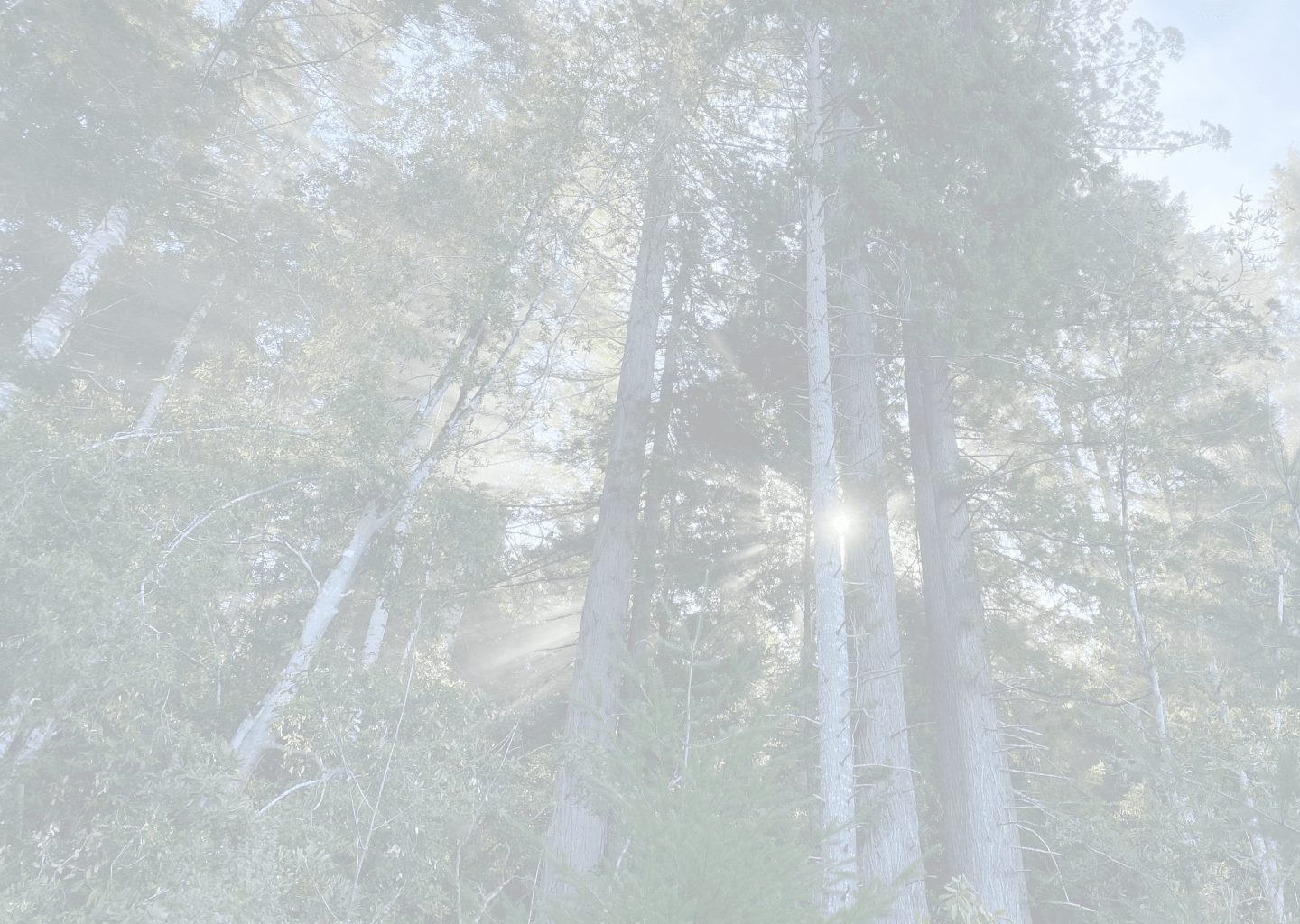

So let's talk trees.
Slightly more than one-third of America is forested, a percentage that has remained stable since the early 1900s.
And wood you believe it? Not all forests are the same.
Trees are trees are trees, right? Not really. Think of America’s forests as divided into two large categories: non-working and working.
Working Forests
514 Million Acres
Non-Working Forests
251 Million Acres
Working Forests
514 Million Acres*
Working forests do just that—work. They’re carefully managed to continue providing clean air, clean water, and wildlife habitat, but also to produce a steady, renewable supply of wood for lumber, energy, paper and packaging, and thousands of items that consumers use every day. Renewable, recyclable and biodegradable, forest products are an earth-friendly material that reduces our dependence on more fossil fuel-intensive options. 2.9 million Americans have jobs supported by working forests.
*514 million acres is approximately 3 Texases.
Non-Working Forests
251 Million Acres*
When people think of wooded lands, they typically picture non-working forests—parks, hiking trails, backyard woods. These are forested lands not managed to produce products.
*251 million acres is approximately 1.5 Texases.
Now, let's branch out.
Public Non-Working Forests
167 Million Acres*
Forests controlled by local, state, or federal government entities that are not harvested to produce products (think Yosemite). These lands include our treasured national parks and preserves.
*167 million acres is approximately 1 Texas.
Private Non-Working Forests
84 Million Acres*
Forests under private ownership that are not harvested to produce products (think scrubby Texas dude ranch-type lands like in old western movies).
*84 million acres is approximately 0.5 Texases.
Public Working Forests
155 Million Acres*
Public working forests include state and federal lands that permit logging and other commercial activities. National forests—which are different from non-working national parks—are a good example.
*155 million acres is approximately 1 Texas.
Private Working Forests
359 Million Acres*
The vast majority of our country’s working forests are on private land, owned by individuals, families, small and large businesses. Private working forests are often part of a retirement portfolio. (Think pension funds.)
*359 million acres is approximately 2 Texases.
Non-Working
Public Non-Working
167 Million Acres
Private Non-Working
84 Million Acres
Working
Public Working
155 Million Acres
Private Working
359 Million Acres
Not to throw shade on any one type of forest…
All forested lands are uniquely essential and all play a role in mitigating climate change.





So let's talk trees.
Slightly more than one-third of America is forested, a percentage that has remained stable since the early 1900s.
Slightly more than one-third of America is forested, a percentage that has remained stable since the early 1900s.

And wood you believe it? Not all forests are the same.
Trees are trees are trees, right? Not really. Think of America’s forests as divided into two large categories: non-working and working.
Tap on the pie chart slices below
Non-Working Forests
251 Million Acres*
When people think of wooded lands, they typically picture non-working forests—parks, hiking trails, backyard woods. These are forested lands not managed to produce products.
*251 million acres is approximately 1.5 Texases.
Non-Working Forests
251 Million Acres
251 Million Acres
Working Forests*
514 Million Acres
514 Million Acres

Now let's branch out.
For climate discussions, our forests can be further divided into two additional categories: public and privately owned. This now gives us a complete picture of America’s growing trees.
Tap on the pie chart slices below
Private Working Forests
359 Million Acres*
The vast majority of our country’s working forests are on private land, owned by individuals, families, small and large businesses. Private working forests are also often part of a retirement portfolio (think pension funds).
*359 million acres is approximately 2 Texases.
Non-Working
Public Non-Working
167 Million Acres
167 Million Acres
Private Non-Working
84 Million Acres
84 Million Acres
Working
Public Working
155 Million Acres
155 Million Acres
Private Working
359 Million Acres
359 Million Acres

Not to throw shade on any one type of forest…
All forested lands are uniquely essential and all play a role in mitigating climate change.
But don’t miss the forest for the… you know.
Let’s be clear—all forests are needed to meet our climate goals. But different forest types provide climate mitigation benefits in different ways. As the U.S. works toward net zero, we must understand the value that different forest types bring in terms of both sequestration and storage.

Non-working forests are often home to older trees, which are typically larger and have more carbon stored. As trees age, their sequestration rate slows, meaning they pull less CO2 out of the atmosphere. When older trees die, their stored carbon is slowly released back into the atmosphere as they decompose.
TLDR: Generally, non-working forests store more carbon but sequester CO2 slower.
Everyone asks about per-acre averages, but forests, like millennials, are unique and complicated. Comparing per-acre averages is a fool’s errand.

Working forests are generally home to a mosaic of vigorously growing trees, which sequester CO2 from the atmosphere at impressive rates as they grow. When trees are harvested and turned into solid wood products, they continue to store huge amounts of carbon in the built environment for generations. Over time and at scale, working forests are a very powerful carbon mitigation tool.*
TLDR: Generally,working forests store less carbon, but sequester CO2 faster.
Everyone asks about per-acre averages, but forests, like millennials, are unique and complicated. Comparing per-acre averages is a fool’s errand.
But don't miss the forest for the... you know.
Let’s be clear—all forests are needed to meet our climate goals. But different forest types provide climate mitigation benefits in different ways. As the U.S. works toward net zero, we must understand the value that different forest types bring in terms of both sequestration and storage.
Non-Working Forests
Working Forests
Remember this?
In a single year, the U.S. emits roughly 6,676 MMT of CO2e.
For perspective:
Annual Passenger Vehicle Travel Emissions
1,068 MMT CO2e
1,068 MMT CO2e
What about forest sector emissions?
Emissions From Forestry
Harvest Operations (Equipment)
4.2 MMT CO2e
Harvest Operations (Equipment)
4.2 MMT CO2e
Emissions From Forest Products
Manufacturing Facilities
76 MMT CO2e
Manufacturing Facilities
76 MMT CO2e
What about biomass emissions?
Emissions from Biomass Combusion at
Forest Products Manufacutring Facilities
137 MMT CO2e
Forest Products Manufacutring Facilities
137 MMT CO2e
Emissions from the Combustion of
"Biomass-Wood" for Energy Production
229.1 MMT CO2e
"Biomass-Wood" for Energy Production
229.1 MMT CO2e
What do wildfire emissions look like?
Annual Wildfire Emissions (Not an industrial
emission, but it's here for reference becuase
we know you'll ask about it.)
141.1 MMT CO2e
emission, but it's here for reference becuase
we know you'll ask about it.)
141.1 MMT CO2e
Yeah but what about _____ emissions?
More info on forest-related emissions here.
Now let's look closely at sequestration.
Each year, growing trees sequester
1,581 MMT of CO2e.
1,581 MMT of CO2e.
That's more than annual U.S. emissions from passenger vehicle travel.
Private working forests account for nearly three-quarters of that total.








Biogenic Emissions
Industrial Emissions




Private Working 1,151 MMT CO2e
Public Working 325 MMT CO2e
Public Non-Working 92 MMT CO2e
Private Non-Working 12.9 MMT CO2e
And that's just sequestration.
Sequestration is a complicated force of nature. The best available data (what we just looked at) is the human attempt to measure a natural process—transfers, emissions, puts and takes of the forest carbon cycle. It’s messy. Here’s a deeper dive.
Drumroll, please...
Below this line, we are looking at storage, which just… is. The storage data here is a straightforward measurement of carbon in the forest at a specific point in time, not a process.
Private Working
Public Working
Private Non-Working
Public Non-Working
Sequestered
(gross CO2e captured through one year’s growth)




Stored
(total sink)




This is how much CO2e is currently stored by America’s forests.
Each year, sequestered CO2e is added to the ever-growing storage sink (much like new earnings being deposited into a savings account).
Stored
(total sink
+ yearly sequestered)
+ yearly sequestered)
Private Working
Almost there...

82,057 MMT of CO2e
in 359 million acres
Public Working

42,706 MMT of CO2e
in 155 million acres
Private Non-Working

4,296 MMT of CO2e
in 84 million acres
Public Non-Working
National Parks
3,465 MMT


20,501 MMT of CO2e
in 167 million acres

Yeah, it's pretty impressive.
But why is this bar so tree-mendously long?
There are two main reasons. One, there are more private working forest acres than any other forest type. And two, for private working forests, markets keep forests as forests. Forest products markets incentivize private forest owners to invest in their forests, keep them healthy, and keep them growing—pulling carbon out of the atmosphere and storing it long term. The data clearly shows that the continuous cycle of growing, harvesting, and replanting yields an IMPRESSIVE carbon benefit on the landscape.
There are two main reasons. One, there are more private working forest acres than any other forest type. And two, for private working forests, markets keep forests as forests. Forest products markets incentivize private forest owners to invest in their forests, keep them healthy, and keep them growing—pulling carbon out of the atmosphere and storing it long term. The data clearly shows that the continuous cycle of growing, harvesting, and replanting yields an IMPRESSIVE carbon benefit on the landscape.
At the same time tree growth is adding carbon to the live tree carbon storage pool...

All Forests' Gross Sequestration
(How much trees added to the columns)
...other forces are removing it. Trees in the forest die. They decay over time. And we harvest trees.
The Forest Service calculated that the amount of carbon actually added to the forest carbon pool in 2018 was 782.4 MMT CO2e. Folks refer to this as “net sequestration,” because it takes into account all the additions to and subtractions from the forest carbon.

Net Carbon Stock Change (Net Flux / "Net Sequestration")
(How much the columns grow)
Remember this?
In a single year, the U.S. emits roughly 6,676 MMT of CO2e.

For perspective:
Annual Passenger Vehicle Travel Emissions
1,068 MMT CO2e
1,068 MMT CO2e
Industrial Emissions
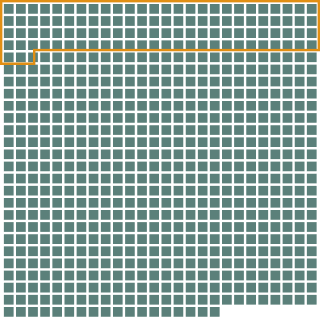
What about forest sector emissions?
Emissions From Forestry Harvest Operations (Equipment)
4.2 MMT CO2e
4.2 MMT CO2e
Emissions From Forest Products Manufacturing Facilities
64.6 MMT CO2e
64.6 MMT CO2e
Industrial Emissions
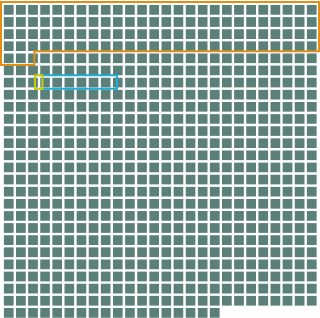
What about biomass emissions?
Emissions from Biomass Combustion at Forest Products Manufacturing Facilities
137 MMT CO2e
137 MMT CO2e
Emissions from Combustion of "Biomass-Wood" for Energy Production
229.1 MMT CO2e
229.1 MMT CO2e
Biogenic Emissions

What do wildfire emissions look like?
Annual Wildfire Emissions (Not an industrial emission, but it’s here for reference because we know you’ll ask about it)
141.1 MMT CO2e
141.1 MMT CO2e
Biogenic Emissions

Yeah but what about _____ emissions?
More info on forest-related emissions here.
More info on forest-related emissions here.
Now let's look closely at sequestration.

Each year, growing trees sequester
1,581 MMT of CO2e.
1,581 MMT of CO2e.
That's more than annual U.S. emissions from passenger vehicle travel.

Private working forests account for nearly three-quarters of that total.

Private Working
1,151 MMT CO2e
1,151 MMT CO2e

Public Working
1,151 MMT CO2e
1,151 MMT CO2e

Private Non-Working
1,151 MMT CO2e
1,151 MMT CO2e

Public Non-Working
1,151 MMT CO2e
1,151 MMT CO2e
Drumroll, please...
Sequestration is a complicated force of nature. The best available data (what we just looked at) is the human attempt to measure a natural process—transfers, emissions, puts and takes of the forest carbon cycle. It’s messy.
Sequestered
(gross CO2e captured through one year's growth)
Private Working

Public Working

Private Non-Working

Public Non-Working

This is how much CO2e is currently stored by America's forests.
Each year, sequestered CO2e is added to the ever-growing storage sink (much like new earnings being deposited into a savings account).
Stored
(total sink + yearly sequestered)
Almost there...
Private Working

82,057 MMT of CO2e in 359 million acres
Public Working

42,706 MMT of CO2e in 155 million acres
Private Non-Working

4,296 MMT of CO2e in 84 million acres

20,501 MMT of CO2e in 167 million acres

Yeah, it's pretty impressive.
But why is this bar so tree-mendously long?
There are two main reasons. One, there are more private working forest acres than any other forest type. And two, for private working forests, markets keep forests as forests. Forest products markets incentivize private forest owners to invest in their forests, keep them healthy, and keep them growing—pulling carbon out of the atmosphere and storing it long term. The data clearly shows that the continuous cycle of growing, harvesting, and replanting yields an IMPRESSIVE carbon benefit on the landscape.
There are two main reasons. One, there are more private working forest acres than any other forest type. And two, for private working forests, markets keep forests as forests. Forest products markets incentivize private forest owners to invest in their forests, keep them healthy, and keep them growing—pulling carbon out of the atmosphere and storing it long term. The data clearly shows that the continuous cycle of growing, harvesting, and replanting yields an IMPRESSIVE carbon benefit on the landscape.
At the same time tree growth is adding carbon to the live tree carbon storage pool…

All Forests' Gross Sequestration
1,581 MMT CO2e
(How much trees added to columns)
...other forces are removing it. Trees in the forest die. They decay over time. And we harvest trees.
The Forest Service calculated that the amount of carbon actually added to the forest carbon pool in 2018 was 782.4 MMT CO2e. Folks refer to this as “net sequestration,” because it takes into account all the additions to and subtractions from the forest carbon.

Net Carbon Stock Change (Net Flux)
782.4 MMT CO2e
(How much the columns grow)


Knock on wood.
Wood products store carbon and everybody forgets that.
So harvesting trees is...good?
Nothing can make carbon disappear, it can only move from one carbon storage pool to another. Trees near their peak sequestration potential can be transformed into products that store sequestered carbon for decades, even centuries.
Society needs stuff—lumber for houses, mass timber for buildings, cardboard for shipping, and paper for you to write us a thank you note for this awesome data visualization.
Forest products extend the carbon benefits from the forests to your desk, house, and #2 Ticonderoga. The more of this natural, biodegradable, carbon-storing material we use, the less other stuff we use.
Forest products extend the carbon benefits from the forests to your desk, house, and #2 Ticonderoga. The more of this natural, biodegradable, carbon-storing material we use, the less other stuff we use.

Carbon stored in wood products
currently: 9,786 MMT
currently: 9,786 MMT
Wood products come from working forests.
And get this, Harvests occur on less than 2% of working forest land each year.
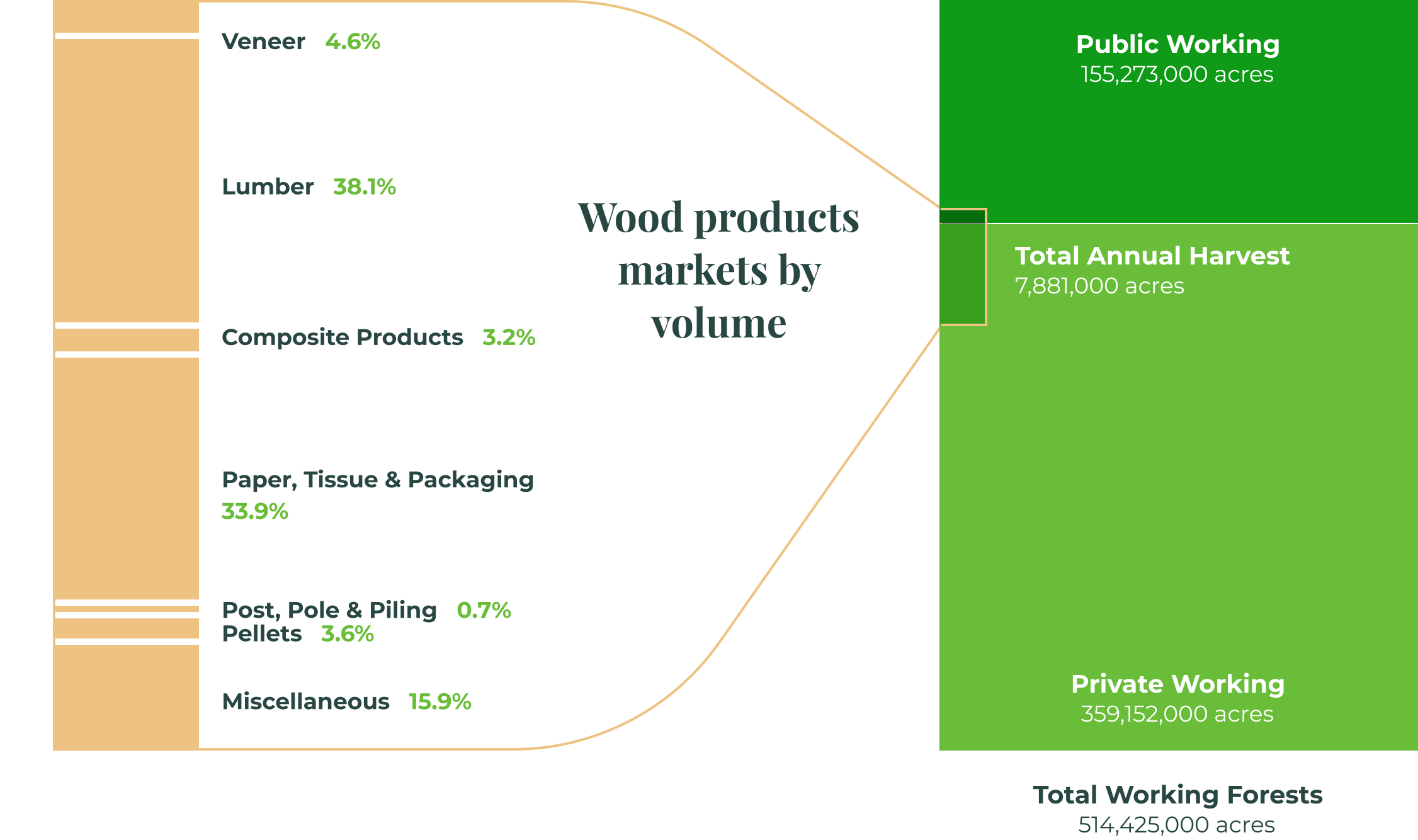
Private working forests really do work.
Let's recap: private working forests provide 73% of our forests' annual gross sequestration, 54% of total carbon storage, all while providing 90% of the harvest for forest products.
How is that possible?
…Because in the U.S., we don’t cut and move on.

We replant, regrow, and regenerate the exact same amount we cut each year, maintaining a never-ending cycle. Today, private forest owners are actually growing 43% more wood than they harvest.
A continuous cycle.
A continuous cycle.

That's right. Private working forests are sustainable
As a global leader in sustainable forest management, the U.S. has been able to consistently deliver carbon-storing wood products and increase overall timberland volume, outpacing America’s rising population.

60%
Between 1953 and 2017, a time of great population growth, the total volume of trees grown in the U.S. increased by 60%.
What About Old Growth? Most of our nation’s old growth forests were harvested for settlement and industrialization long before any of us were alive. Pockets of true old growth still exist, but most old growth is in publicly owned forests. Since the early 20th century, sustainable forestry practices have stabilized our forest cover and have enabled our forests to thrive while also meeting the needs of a growing population. This isn’t just an opinion, you can see the history in the data. The modern forestry we practice today embraces a long-term commitment to sustainability, and U.S. forestry is now a global leader in sustainable forest management.
Ready to geek out?
This handy-dandy chart presents the emissions, sequestration and storage data we just covered at a bird’s-eye* view.
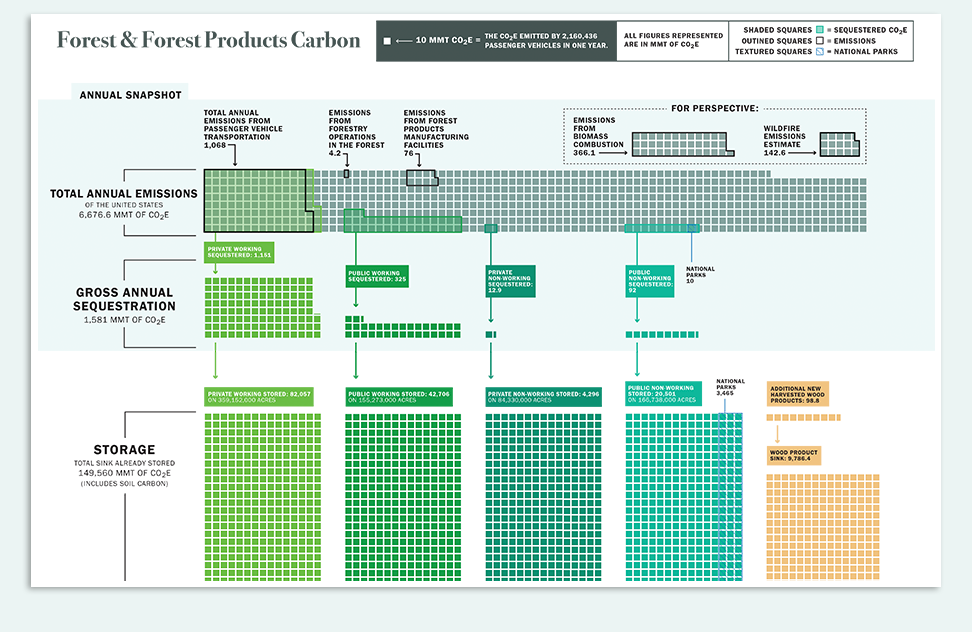
Download the PDF
*No feathered creatures were harmed in the creation of this chart.
So harvesting trees is...good?
Nothing can make carbon disappear, it can only move from one carbon storage pool to another. Trees near their peak sequestration potential can be transformed into products that store sequestered carbon for decades, even centuries.
Society needs stuff—lumber for houses, mass timber for buildings, cardboard for shipping, and paper for you to write us a thank you note for this awesome data visualization.
Forest products extend the carbon benefits from the forests to your desk, house, and #2 Ticonderoga. The more of this natural, biodegradable, carbon-storing material we use, the less other stuff* we use.
Forest products extend the carbon benefits from the forests to your desk, house, and #2 Ticonderoga. The more of this natural, biodegradable, carbon-storing material we use, the less other stuff* we use.

Knock on wood.
Wood products store carbon and
everybody forgets that.
everybody forgets that.
































































































Carbon stored in existing wood products: 9,786 MMT
The wood products sink holds more than 2x the CO2e in our national parks.
Carbon Stored in New Wood Products

New forest products—sourced from working forests—add 98.8 MMT of CO2e to the carbon sink every year.
Wood products come from working forests.
And get this. Harvests occur on less than 2% of working forest land each year.

Private working forests really do work.
Let's recap: private working forests provide 73% of our forests' annual gross sequestration, 54% of total carbon storage, all while providing 90% of the harvest for forest products.
How is that possible?
…Because in the U.S., we don’t cut and move on.
We replant, regrow, and regenerate the exact same amount we cut each year, maintaining a never-ending cycle. Today, private forest owners are actually growing 43% more wood than they harvest.
A continuous cycle.
A continuous cycle.


That’s right. Private working forests are sustainable.
As a global leader in sustainable forest management, the U.S. has been able to consistently deliver carbon-storing wood products and increase overall timberland volume, outpacing America’s rising population.

60%
Between 1953 and 2017, a time of great population growth, the total volume of trees grown in the U.S. increased by 60%.
What About Old Growth? Most of our nation’s old growth forests were harvested for settlement and industrialization long before any of us were alive. Pockets of true old growth still exist, but most old growth is in publicly owned forests. Since the early 20th century, sustainable forestry practices have stabilized our forest cover and have enabled our forests to thrive while also meeting the needs of a growing population. This isn’t just an opinion, you can see the history in the data. The modern forestry we practice today embraces a long-term commitment to sustainability, and U.S. forestry is now a global leader in sustainable forest management.
Ready to geek out?
This handy-dandy chart presents the emissions, sequestration and storage data we just covered at a bird’s-eye* view.

Download the PDF
*No feathered creatures were harmed in the creation of this chart.

Now, imagine if we did more.
We can do this, but the
clock is ticking!
clock is ticking!
28
Years
/
11
Months
/
16
Days
5
Hours
:
48
Minutes
:
32
Seconds
net zero by 2050
U.S. forests have sequestered
24,451
tons of carbon since you’ve been on this page.
24,451
tons of carbon since you’ve been on this page.
"A sustainable forest management strategy aimed at maintaining or increasing forest carbon stocks, while producing an annual sustained yield of timber, fiber or energy from the forest will generate the largest sustained mitigation benefit."
-IPCC August 2019 Special Report
Note: We agree.